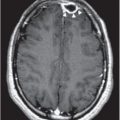| Infectious |
|---|
| Bacterial Haemophilus ducreyi (chancroid) Treponema pallidum (syphilis) Chlamydia trachomatis (lymphogranuloma venereum) Calymmatobacterium granulomatis (donovanosis) Balanitis (often polymicrobial but Candida albicans is often present) |
| Viral |
| Parasitic |
| Noninfectious |
| Trauma |
| Fixed drug eruptions |
| Pyoderma gangrenosuma |
| Behçet’s diseasea |
| Reiter’s syndromea |
| Wegener’s granulomatosisa |
| Neoplasmsa |
| Unknown |
a Unusual.
Major geographic variation exists in the etiology and prevalence of GUD (Table 62.2). In Europe and North America, fewer than 10% of patients who present to sexually transmitted disease (STD) clinics have a genital ulcer compared with 20% to 40% of patients presenting to similar clinics in Africa and Asia. Herpes simplex virus (HSV) is the most common cause of genital ulcerations in Europe and North America, whereas chancroid has been the common cause elsewhere. However, herpetic ulcers are now more common, particularly in patients coinfected with HIV, whereas chancroid has largely disappeared. LGV is endemic in some areas of the tropics and has reappeared as an epidemic among men in developed countries who have sex with men, many of whom are HIV positive. Donovanosis was endemic in New Guinea, India, and Southern Africa but has become rare. Syphilis persists as a global pandemic that has recently reappeared with large outbreaks among men who have sex with men. Males who are circumcised have a markedly reduced probability of acquiring chancroid and to a lesser extent of acquiring herpes or syphilis following heterosexual intercourse.
| Southeast Asia/India | Africa | North America/Europe | |
|---|---|---|---|
| Chancroid | +/– | +/– | +/– |
| Syphilis | +++ | +++ | ++ |
| Genital herpes | ++++ | ++++ | ++++ |
| Lymphogranuloma venereum | + | + | + |
| Donovanosis | +/– | +/– | +/– |
Clinical presentations
Clinical features of GUD are listed in Table 62.3. The incubation period is usually less than 1 week for genital herpes and chancroid, 1 to 3 weeks for LGV, and 2 to 6 weeks for syphilis and donovanosis. Depending on the etiology, the initial lesion can be a papule, pustule, or vesicle which erodes to form an ulcer. In men the ulcers are often located on the coronal sulcus but may also be found on the glans, prepuce, and shaft of the penis or less often on the scrotum or surrounding skin. Herpes and chancroid have a predilection for involving the frenulum. In women, the ulcers may occur on the labia, in the vagina, on the cervix, on the fourchette, or on the perianal area. Perianal and intrarectal ulcers are common among men who have sex with men.
| Syphilis | Herpes simplex virus | Chancroid | Lymphogranuloma venereum | Donovanosis | |
|---|---|---|---|---|---|
| Incubation period | 9–90 d | 2–7 d | 1–14 d | 7–21 d | 8–80 d |
| Primary lesion | Papule | Vesicle | Papule or pustule | Papule, pustule, or vesicle | Papule |
| Number of lesions | Usually solitary | Multiple | Multiple | Usually solitary | Variable |
| Classical ulcer characteristics | |||||
| Size (mm) | 5–15 | 1–10 | 2–20 | 2–10 | Variable |
| Margins | Well demarcated Elevated Round or oval | Erythematous | Ragged, irregular Undetermined | Elevated Round or oval | Variable Elevated, irregular |
| Depth | Superficial or deep | Superficial | Excavated | Superficial or deep | Elevated |
| Base | Red, smooth, nonpurulent | Red, smooth, serous discharge | Purulent exudate | Variable | “Beefy” red, rough |
| Induration | ++ | – | – | – | ++ |
| Pain | – | ++ | ++ | ± | – |
| Lymphadenopathy | ++B | ++B | ++U | ++U | – P |
| Characteristics of lymphadenopathy | |||||
| Consistency | Firm | Firm | Fluctuant | Fluctuant | – |
| Tenderness | – | ++ | ++ | ++ | – |
Genital herpes
Stay updated, free articles. Join our Telegram channel

Full access? Get Clinical Tree





